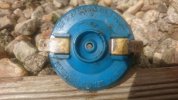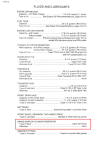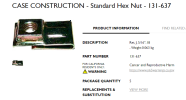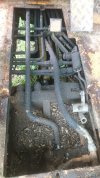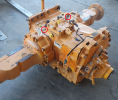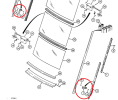mhobson
Well-Known Member
Hello,
I have a 1990 Case 580K digger, assembled in France with about 9400 hours on the clock. I have owned it for over 12 years and it has had very little use over that time, but when needed it has been excellent. The brakes started binding a few years ago but it was not an issue though recently it has got so bad that even in first gear it is very difficult to get it to move. If you press the brake pedal the brakes are totally solid, so there is a difference but not a lot. Some years ago the brakes failed, the master cylinder reservoir was empty and I refilled it with brake fluid, only finding out later that it should have been hytrans. The handbrake has never worked. At my age and ability (73) I think that dropping the transaxle and removing the halfshafts and axle casings is a bit out of my league. I read that you need to remove the seat and floor just to bleed the system. Can someone suggest if there may be a way of overcoming this problem? What in the system releases the brakes and allows the discs to turn, has anyone else suffered a similar problem? I am worried that I will have to sell it and it will likely be only a scrap value.
I have a 1990 Case 580K digger, assembled in France with about 9400 hours on the clock. I have owned it for over 12 years and it has had very little use over that time, but when needed it has been excellent. The brakes started binding a few years ago but it was not an issue though recently it has got so bad that even in first gear it is very difficult to get it to move. If you press the brake pedal the brakes are totally solid, so there is a difference but not a lot. Some years ago the brakes failed, the master cylinder reservoir was empty and I refilled it with brake fluid, only finding out later that it should have been hytrans. The handbrake has never worked. At my age and ability (73) I think that dropping the transaxle and removing the halfshafts and axle casings is a bit out of my league. I read that you need to remove the seat and floor just to bleed the system. Can someone suggest if there may be a way of overcoming this problem? What in the system releases the brakes and allows the discs to turn, has anyone else suffered a similar problem? I am worried that I will have to sell it and it will likely be only a scrap value.

